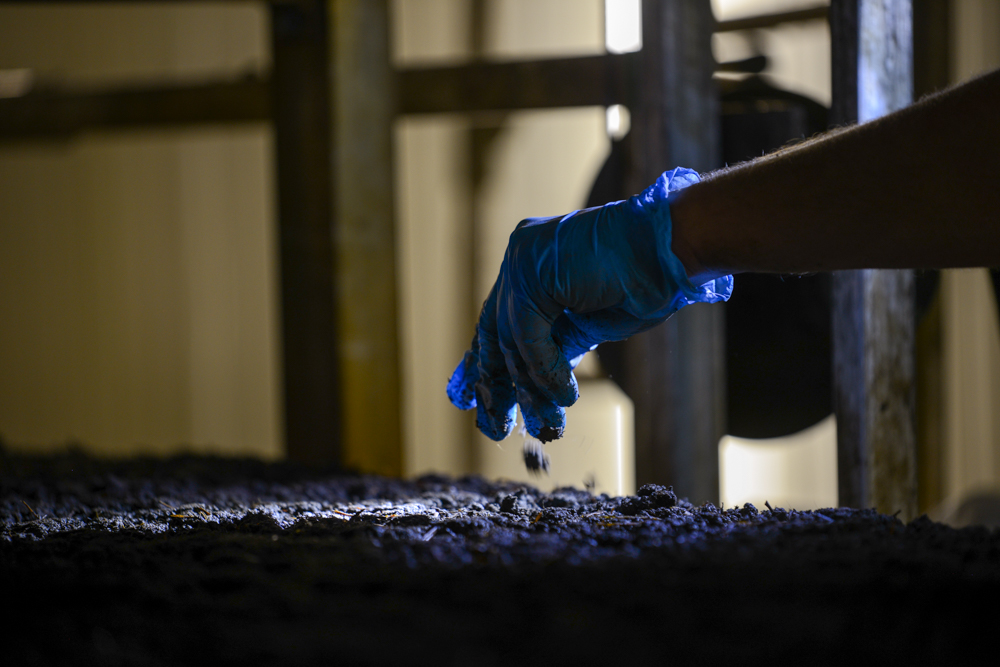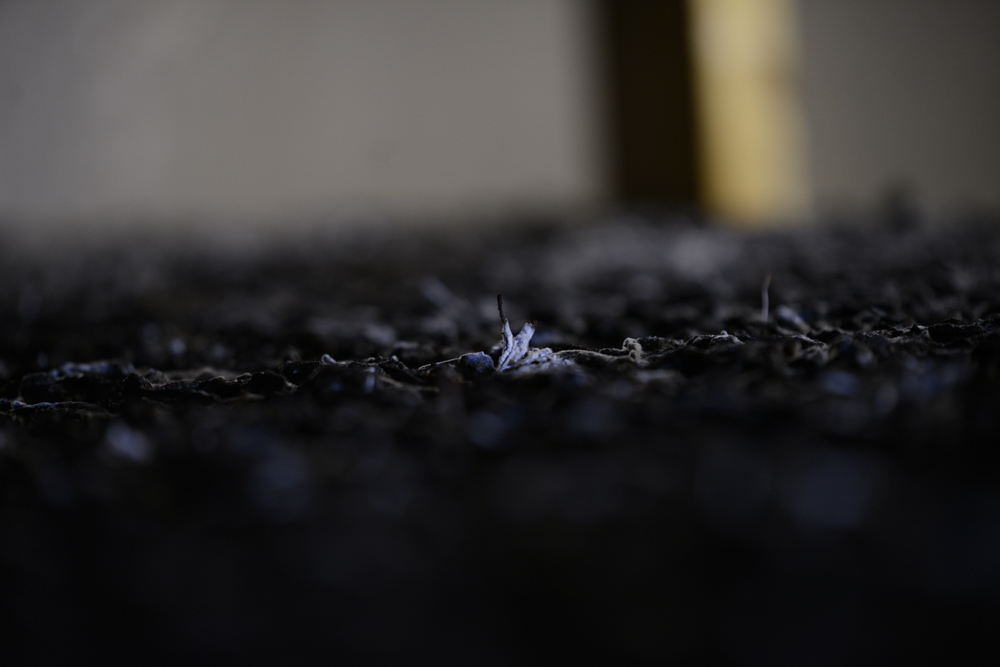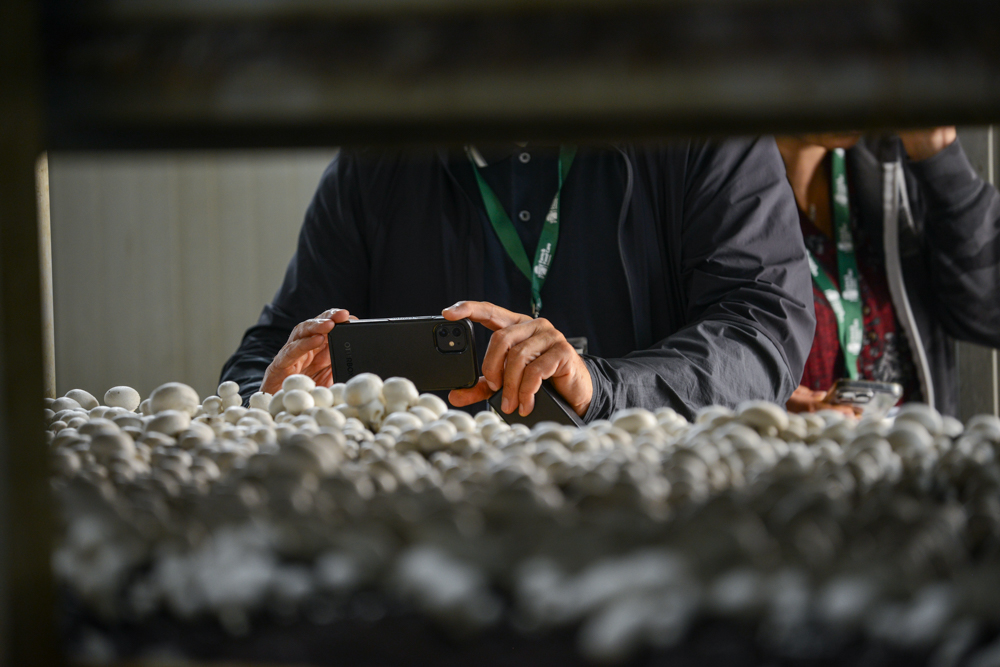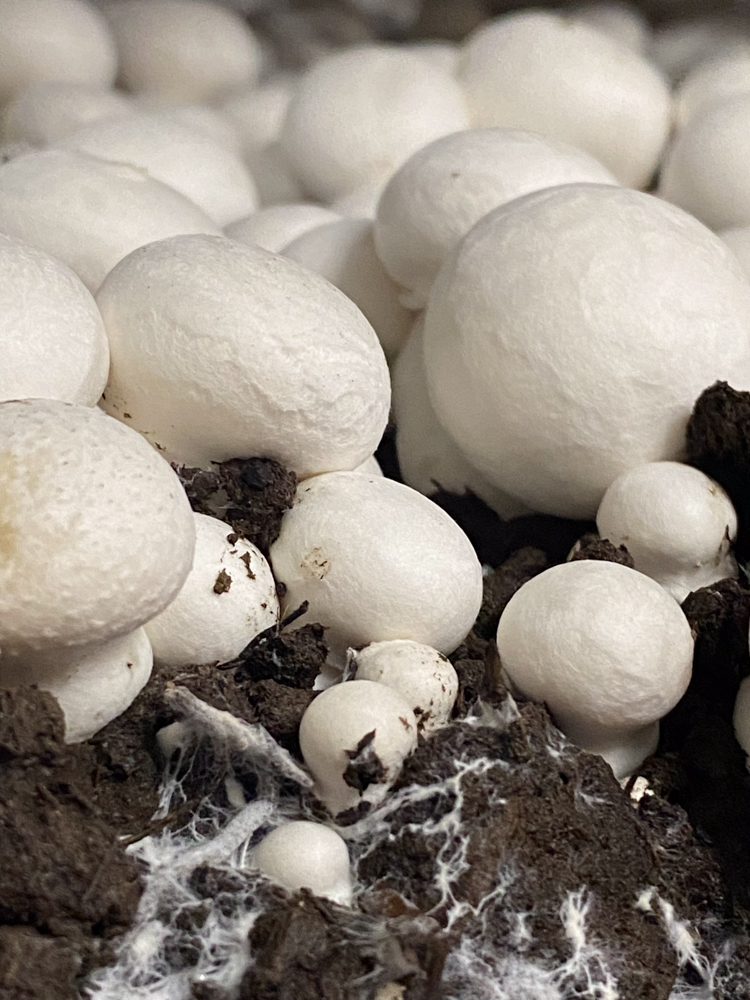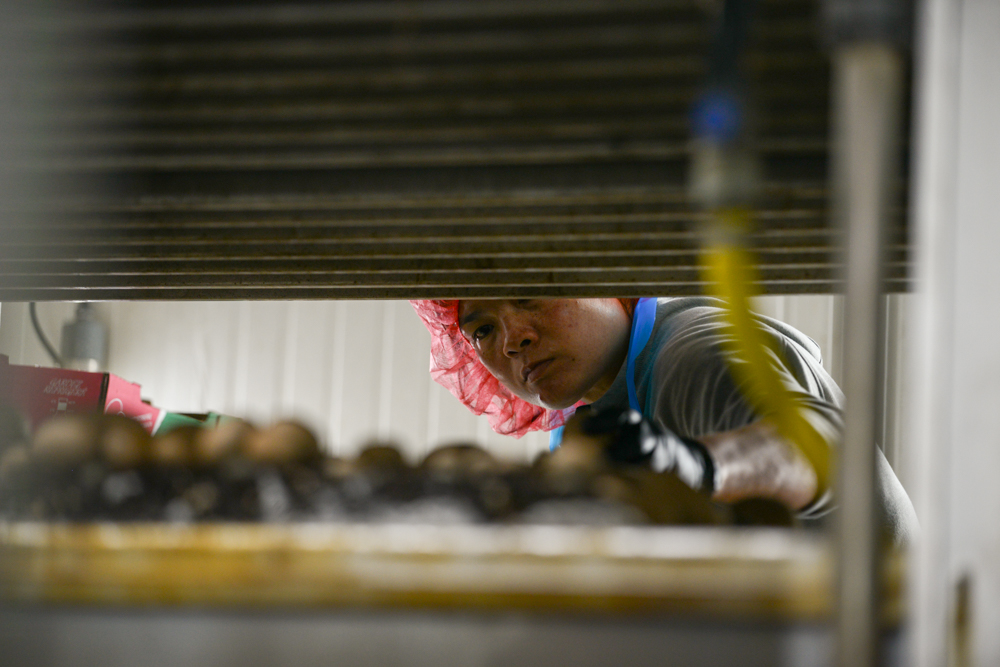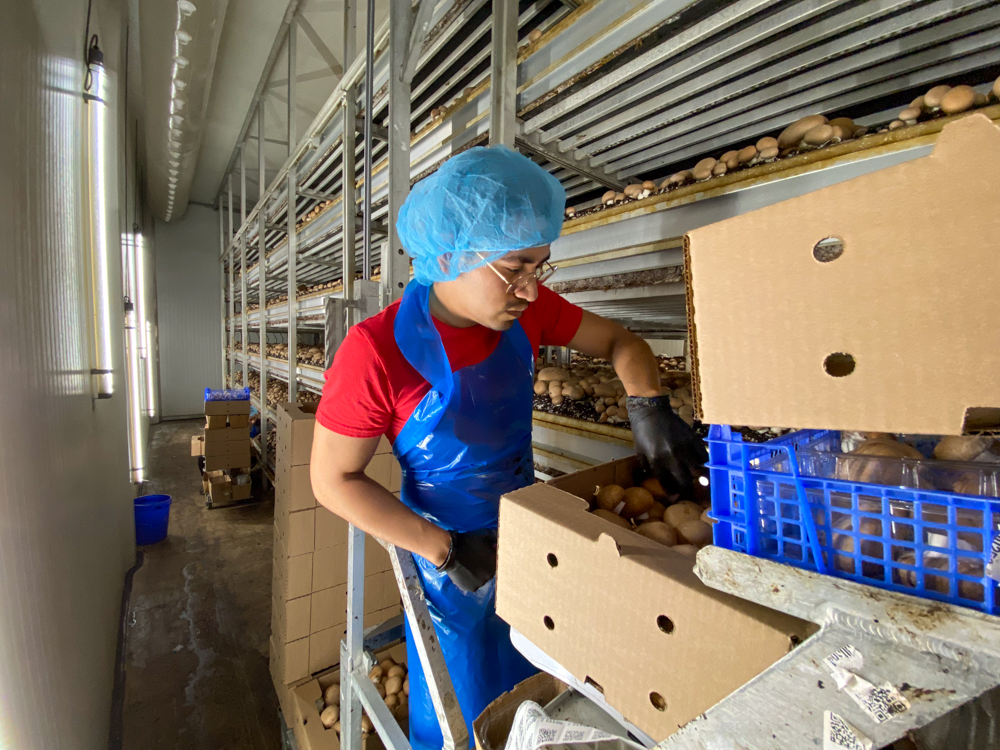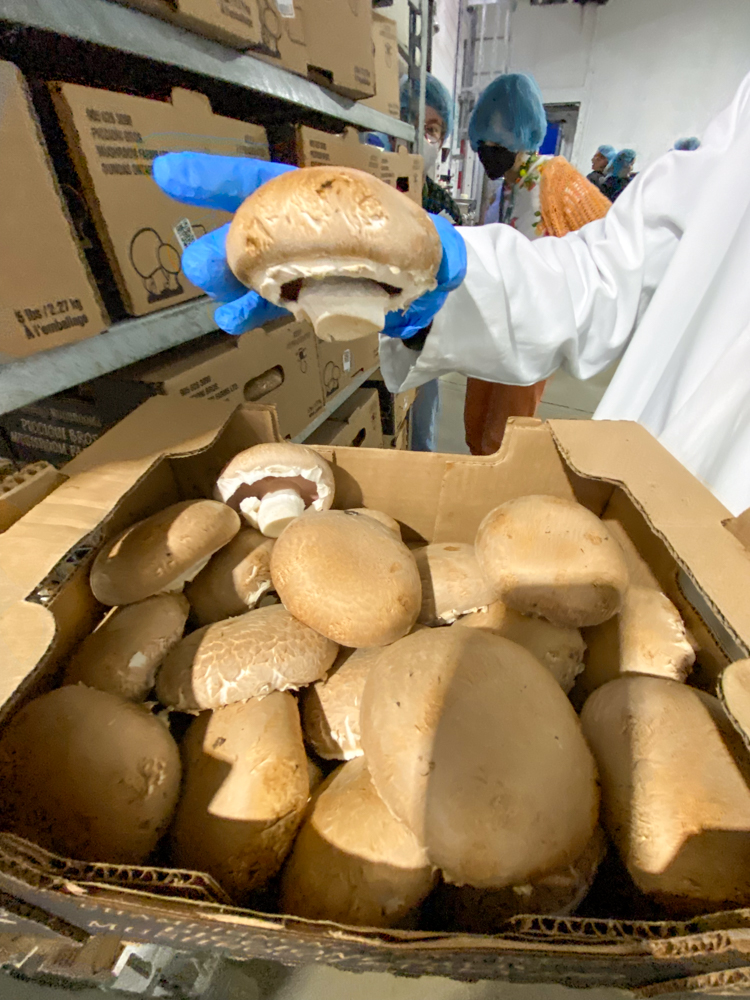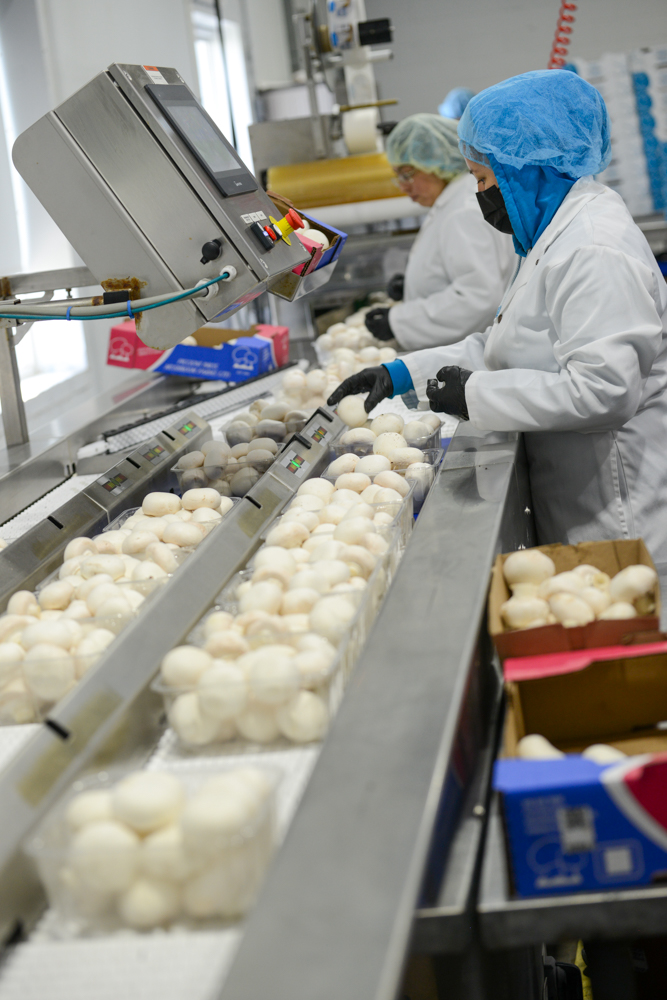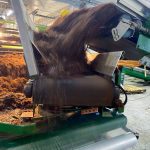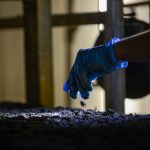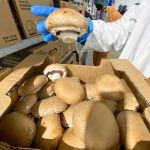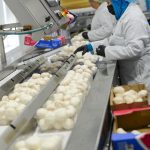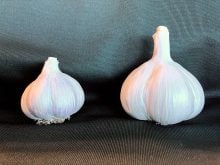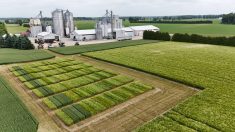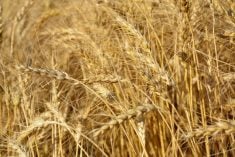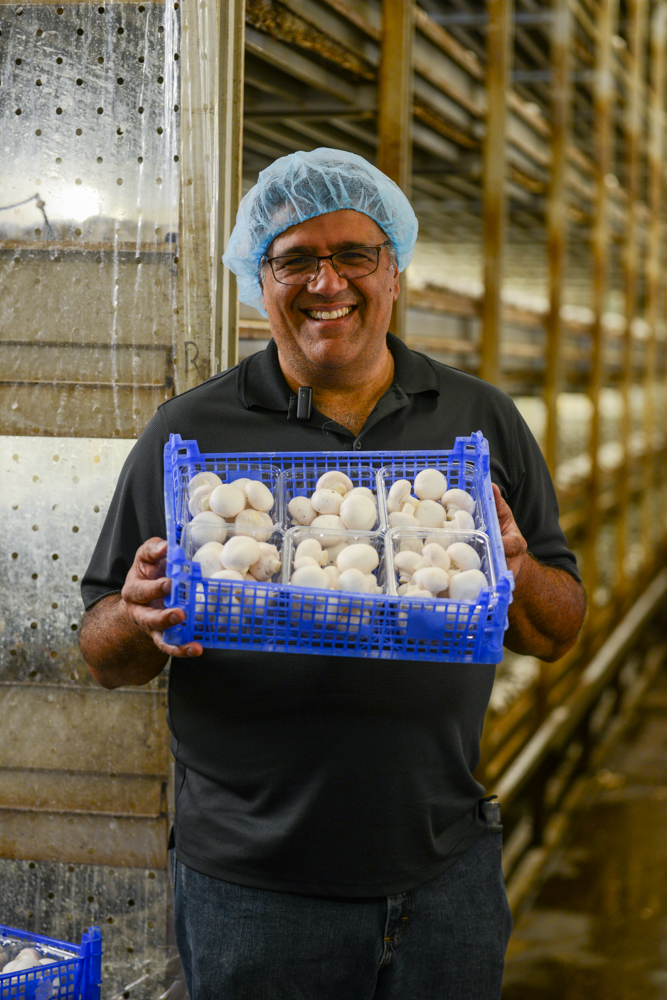
Ontario Piccioni mushroom farm Tour
Lorenzo Piccioni is a second-generation mushroom farmer.
Photo: Diana Martin
Ontario Piccioni mushroom farm Tour
Piccioni uses European technology to offload 38 metric tonnes of substrate and feed it into the growing racks. It takes two hours to finish loading one growing room.
Photo: Diana Martin
Ontario Piccioni mushroom farm Tour
Workers watch for large clumps as the substrate is unloaded from trucks onto the growing racks, breaking up what they can.
Photo: Diana Martin
Ontario Piccioni mushroom farm Tour
As racks fill, workers crumble large clumps of substrate by hand to ensure the best conditions for mushroom development at Piccioni Bros. Mushroom Farm, Dundas, Ont. Oct. 3, 2024.
Photo: Diana Martin
WEB_FTO_DM_FFCOntario Piccioni mushroom farm Tour06
Spawn-infused Phase 3 substrate used by Piccioni results in almost immediate germination for mushroom development.
Photo: Diana Martin
Ontario Piccioni mushroom farm Tour
A nutritionist on the Farm and Food Care Ontario tour of the mushroom facility lines up a shot in one of the rooms growing white mushrooms.
Photo: Diana Martin
Ontario Piccioni mushroom farm Tour
Mushrooms spawn embedded in the substrate germinates rapidly, and within 14 days, mushrooms have fruited and are ready for selection.
Photo: Diana Martin
Ontario Piccioni mushroom farm Tour
Workers in the cremini room carefully select mushrooms, leaving the strongest to grow into portobellos.
Photo: Diana Martin
Ontario Piccioni mushroom farm Tour
Dago Cruz selects cremini mushrooms, slicing off the bottom of the stem before placing them in the appropriate box.
Photo: Diana Martin
Ontario Piccioni mushroom farm Tour
The strongest criminis are left to grow into portobellos for market sales.
Photo: Diana Martin
Ontario Piccioni mushroom farm Tour
Nutritionists file through a grow room during the Farm and Food Care Ontario tour of Piccioni Bros. Mushroom Farm, Dundas, Ont. on Oct. 3, 2024. They were particularly intrigued by the fungi's nutrient value and growing process.
Photo: Diana Martin
Ontario Piccioni mushroom farm Tour
The spawn-to-shelf facility includes a sorting and packaging area where mushrooms are cleaned, graded and packaged for same-day delivery.
Photo: Diana Martin
This second-generation mushroom farm in Dundas, Ont., picks, packages and sells 99.790 kilograms of white, brown and portobello mushrooms weekly. Farmtario reporter captured these images during a fall tour hosted by Farm and Food Care Ontario.





